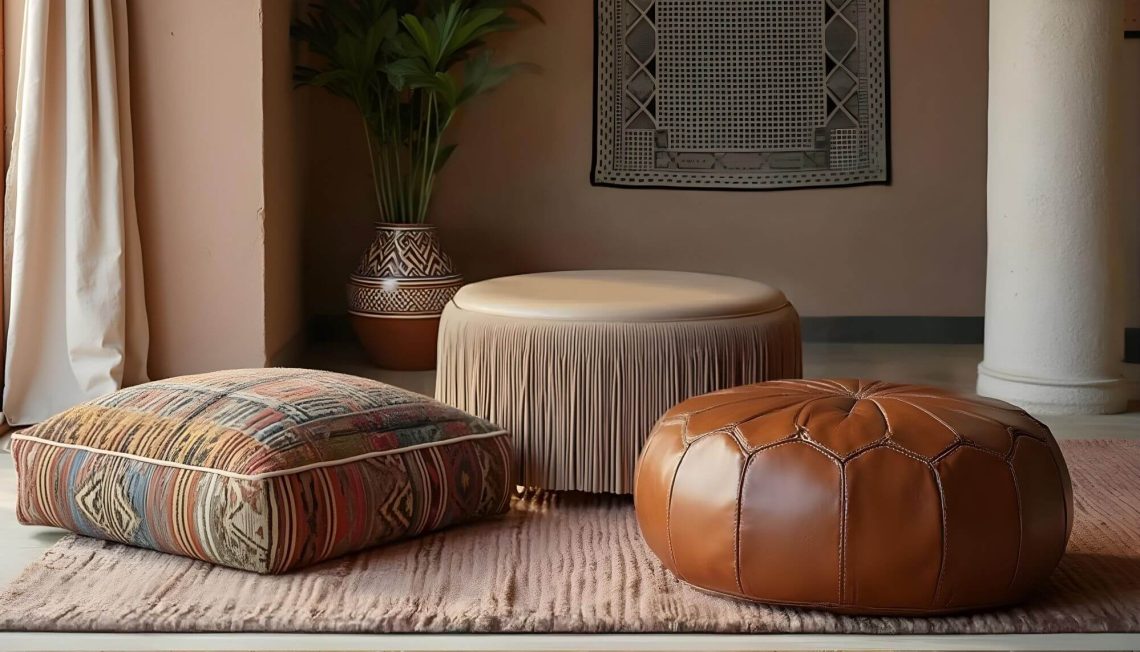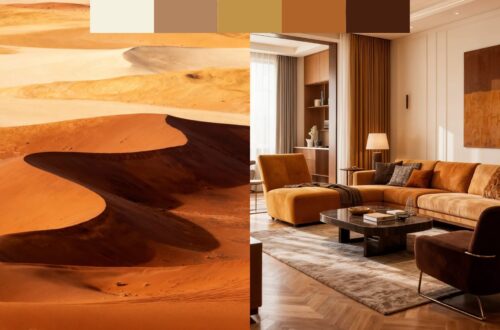Moroccan poufs have a way of becoming the piece everyone wants to sit on. They’re charming, inviting, and endlessly useful. Comfortable footstool? Yes. Stylish side table? Of course. A quick extra seat when guests show up unexpectedly? Absolutely.
But beyond their practicality, they bring a certain something to a room. That layered, collected feel that infuses flair and intention. No wonder they’ve become a design staple around the world.
Let’s dig into their fascinating past, craftsmanship, and the five different styles you’ll love bringing home.
In this Article:
- A Brief History of Moroccan Poufs
- How Traditional Moroccan Leather Poufs Are Made
- 5 Moroccan Pouf Styles You’ll Want in Your Home
- Why Moroccan Poufs Work So Well in Modern Homes
A Brief History of Moroccan Poufs
Moroccan poufs go back centuries. They first made their way into Moroccan homes thanks to the Ottoman influence in the 16th century. At the time, poufs were mostly made from leather, a material Morocco had in abundance thanks to its thriving sheep and goat population.
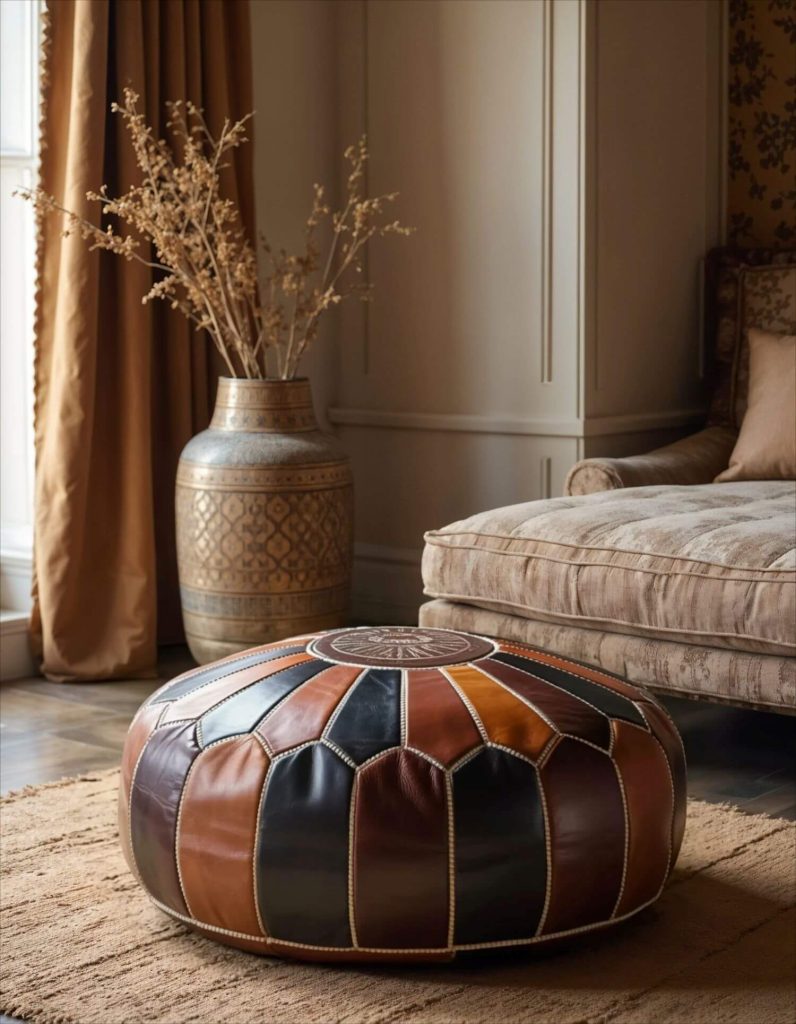
Poufs weren’t just decoration—they symbolized comfort and hospitality. Over time, they took on different shapes and materials but kept their inviting nature. Today, Moroccan poufs can be round or square, leather or cotton, subtle or bold, but always beautiful and functional.
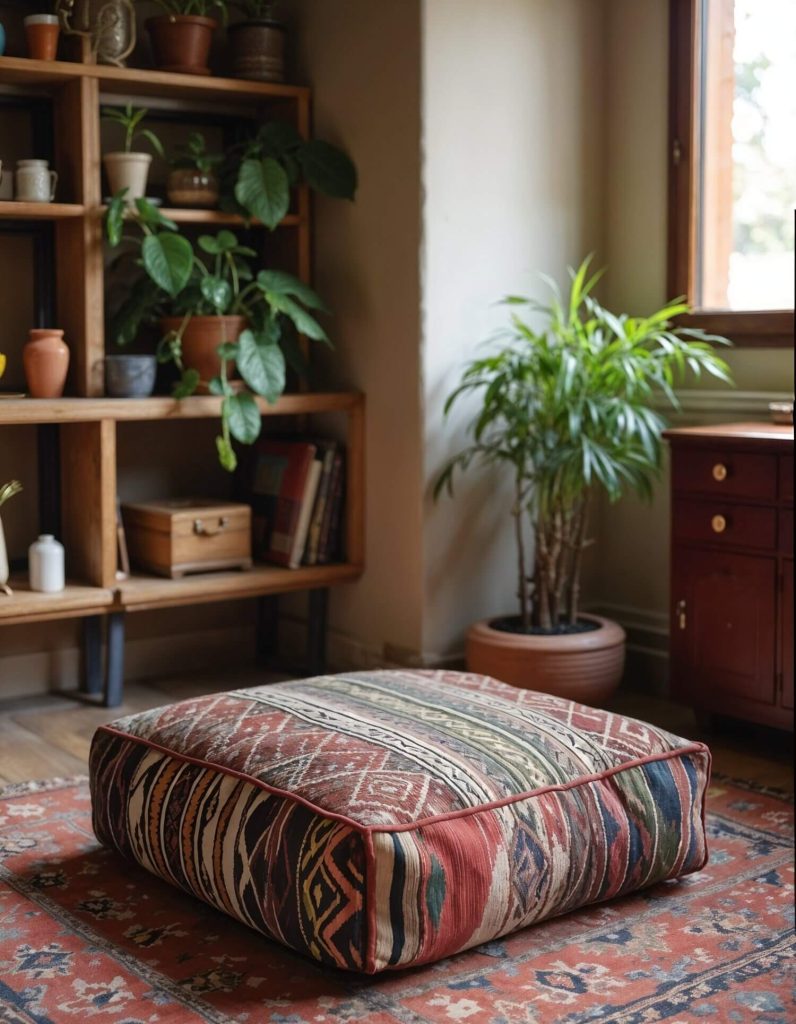
In terms of wool styles, a favorite among collectors is the Kilim pouf, which uses vintage wool rugs to create beautifully textured pieces. These versions feel especially soulful, bringing the heritage of Moroccan weaving into a different form.
No matter the shape or material, it is safe to say the timeless appeal of Moroccan poufs hasn’t faded one bit.
You May Also Like: 5 Versatile African Seating Styles that Energize Your Space
How Traditional Moroccan Leather Poufs Are Made
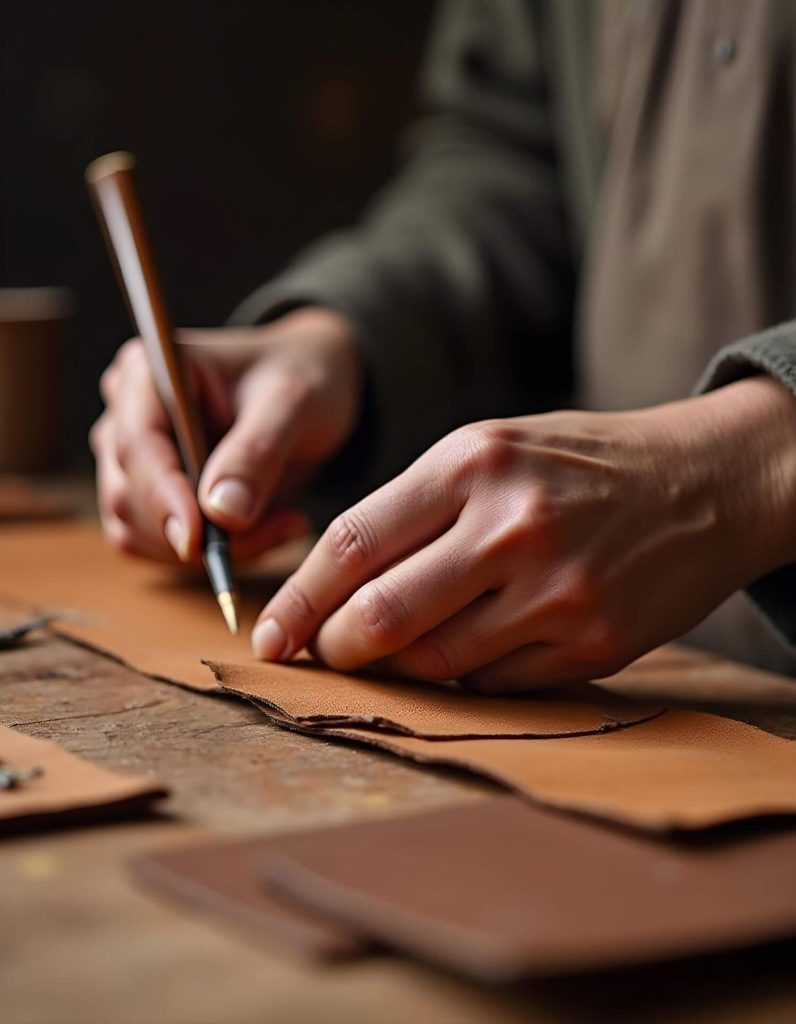
There’s something mesmerizing about watching a leathersmith work beneath the Moroccan sun. And crafting Moroccan poufs takes no small amount of skill. Here’s what goes into the making of a traditional round leather Moroccan pouf:
- Natural dyeing: The leather is dyed using plant-based pigments—saffron for yellow, henna for burnt orange and red, mint for green tones. It is dipped then dried multiple times until reaching the perfect shade. This process takes time: usually around 20 days.
- Sun-drying and prepping: Once the right tone is achieved, the leather is sectioned and cut into precise shapes. Each pouf needs at least 36 expertly prepared leather pieces.
- Stitching by hand: The pieces are stitched using “Sarma” wool thread or cactus silk, known as Sabra. Assembling the pouf takes about two days.
- Made by artisans: This craft is still thriving in Moroccan cooperatives, where artisans work with skill and intention.
While the handmade process is slow, it is exactly what gives Moroccan poufs their unmatched feel and quality.
You May Also Like: African Pottery: A Timeless Treasure | 7 Remarkable Styles
5 Moroccan Pouf Styles You’ll Want in Your Home
There’s no shortage of options when it comes to Moroccan pouf styles. Here are our personal favorites—and why we think they work so well.
1. The Classic Round Leather Pouf
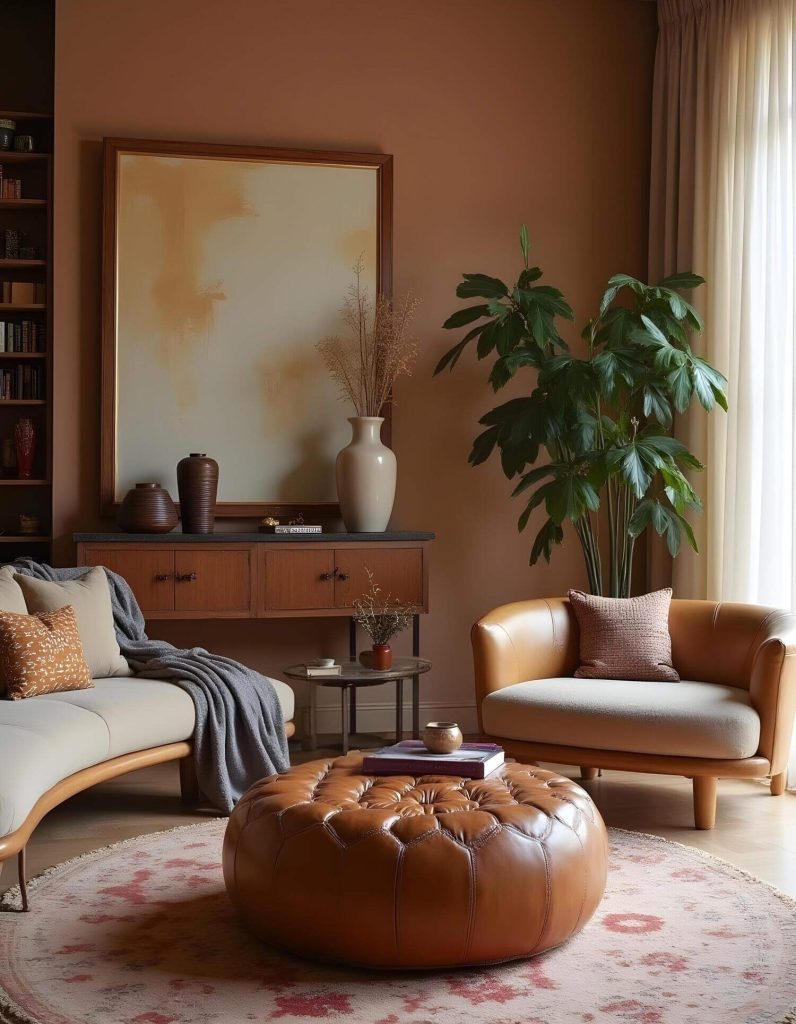
This is the design that made Moroccan poufs famous. Rounded, richly stitched, and usually in soft, earthy tones like tan, brown, or white. These look right at home in a boho space, but honestly, they’re timeless enough for almost any room.
You’ll also find modern versions in velvet or suede, which are perfect if you want the look with a slightly softer finish.
Top Pick: Leather pouffe – cognac brown, Poufs & Pillows
2. Modern Moroccan Poufs with a Twist

Some designers are taking the traditional pouf and giving it a sleek update. Think clean lines, minimalist seams, or a stylish fringe detail. These versions work beautifully in contemporary interiors where you want a nod to Moroccan design in a stunning modern style.
Top Pick: Kora Fringe Leather Ottoman – Brown, Dounia Home
3. Square Leather Moroccan Poufs
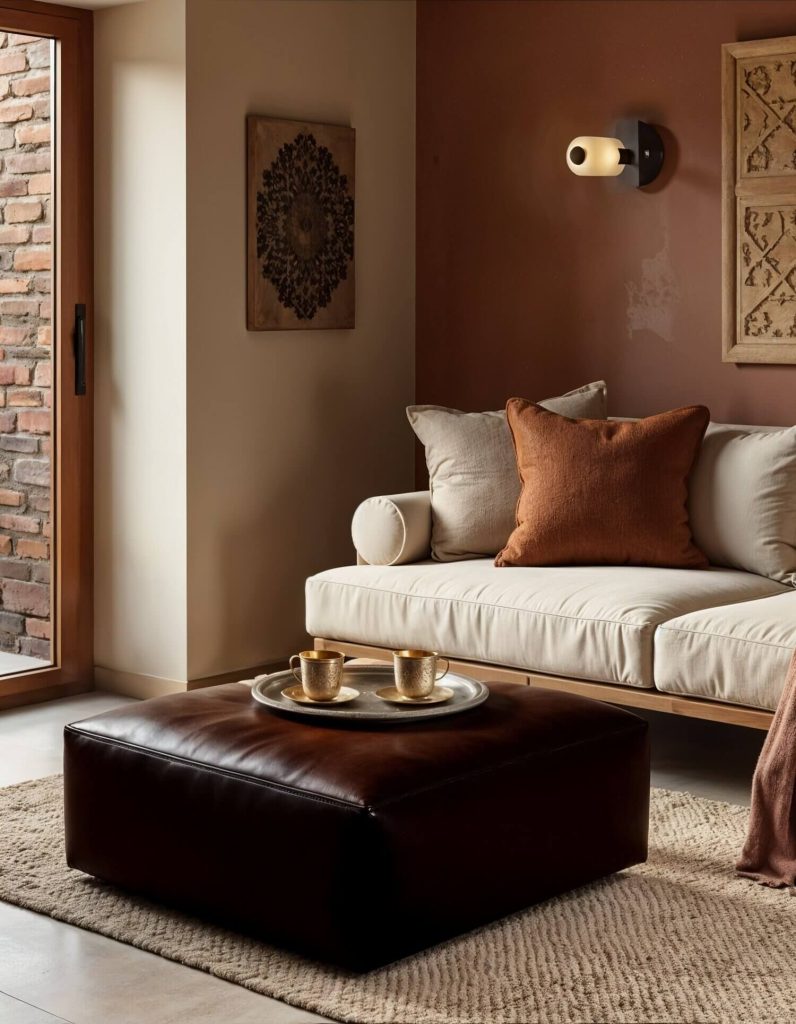
If you prefer a more geometric look, the cube-style Moroccan pouf is worth exploring. I love using these in rooms that need structure. They’re just as versatile as the round ones and can double as coffee tables or ottomans.
Bonus: they’re stackable, which makes them easy to store when you’re not using them.
Top Pick: Moroccan Leather Ottoman / Pouf – Brown, Moroccan Corridor
4. Vintage Kilim Wool Poufs

Here’s where my bias shows. I’m completely drawn to Kilim poufs. There’s a coziness and charm in their patterns that instantly warms up a room. These are ideal for spaces that feel relaxed, lived-in, and layered.
If you like a space that looks like it’s evolved over time, Kilim poufs are your friend.
Top Pick: Moroccan Vintage Kilim Pouf, Verve Culture
5. Cotton Poufs for Everyday Living
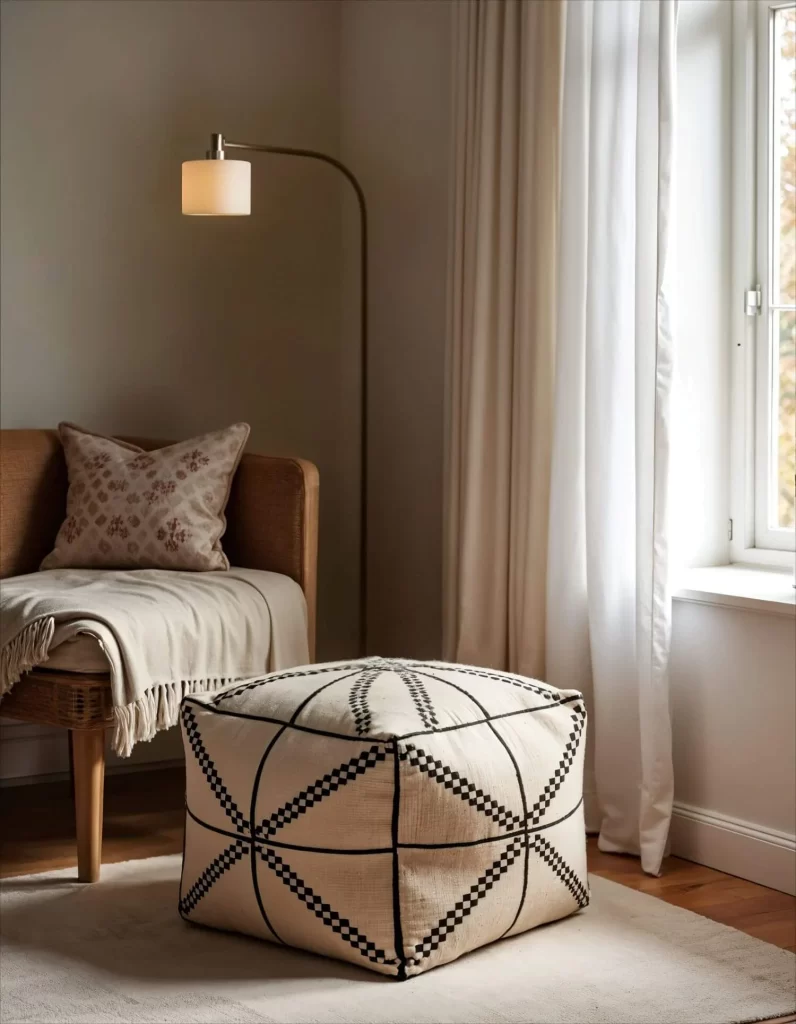
Not every room needs a leather statement. Cotton Moroccan poufs are a smart option for family-friendly spaces. They’re lighter, easy to clean, and come in a range of soft colors. If your space gets a lot of traffic from little feet or paws, these are the way to go.
Top Pick: Best Moroccan kilim pouf, Marrakeche
Why Moroccan Poufs Work So Well in Modern Homes
You don’t need to have a Moroccan-style home to enjoy the benefits of a good pouf. That’s the beauty of them. They’re compact and movable, which means you can style them anywhere:
- In a reading corner
- At the foot of the bed
- As extra seating in the living room
- Paired with a floor mirror for a dressing nook
They also layer beautifully with rugs, especially if you’re working with textures like jute, wool, or sisal. A leather Moroccan pouf on a vintage rug? Yes, please.
In conclusion, Moroccan poufs are an easy win if you’re looking for something that brings flair and function to your space.
They’re handcrafted, multi-purpose, and full of charm. And with so many designs available today—from traditional to modern—there’s one for every style.
Once you bring one into your space, and you’ll probably wonder how you ever lived without it.
Loved this article? Then don’t miss The 5 Moroccan Rug Styles That Make Every Step Special.

